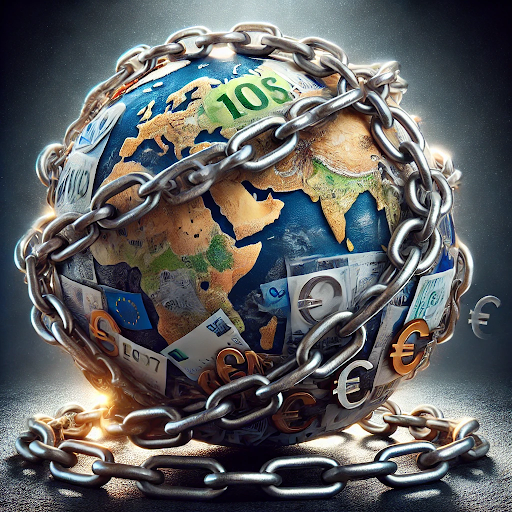In today’s globally interconnected economy, tariffs represent more than just a fiscal policy tool—they are a critical risk factor that can ripple across supply chains, disrupt operations, and alter competitive dynamics. As businesses seek to mitigate risk in an increasingly volatile trade environment, understanding the potential impact of tariffs on various industries is paramount.
Understanding the Impacts of Tariffs
Tariffs, essentially taxes on imported goods, can have a cascading effect on businesses. When tariffs are imposed, the cost of imported goods increases, impacting businesses that rely on these imports for production or sale. This can lead to several consequences:
- Cost Increases: Tariffs on imported raw materials and intermediate goods can lead to increased production costs for manufacturers, resulting in price hikes to be passed on to consumers and a subsequent slowdown in demand, especially in industries with thin margins.
- Supply Chain Disruptions: Tariffs can disrupt established supply chains, forcing businesses to seek alternative suppliers, often at higher costs or with longer lead times.
- Reduced Competitiveness: Businesses facing higher input costs may become less competitive in the global market, especially if their competitors are not subject to the same tariffs.
- Retaliatory Measures: Tariffs can trigger retaliatory measures from other countries, leading to a trade war where multiple countries impose tariffs on each other’s goods, further exacerbating the impact on businesses.
- Market Uncertainty and Investment Delays: Trade policy uncertainty has historically led to delayed capital investments. Businesses often postpone strategic decisions amid fluctuating tariff regimes, resulting in lost opportunities for growth and innovation.
Industries at High Risk: A Sector-by-Sector Analysis
Tariff policies impact industries unevenly. Based on historical trends and current projections, the following sectors are likely to be the most affected:
-
Manufacturing & Industrial Production:
- Increased Raw Material Costs: Tariffs on metals, plastics, and other raw materials raise production expenses.
- Supply Chain Vulnerabilities: Dependency on imported components heightens exposure to supply chain disruptions
-
Retail:
- Integrated Global Supply Chains: Dependency on a complex network of suppliers across multiple regions increases exposure to tariff-related disruptions.
- Price Pass-Through: Increased costs may lead to higher retail prices, affecting consumer demand.
-
Agriculture & Food Production:
- Export Market Contraction: Retaliatory tariffs from trading partners can limit access to key export markets.
- Price Volatility: Increased costs of imported agricultural inputs and fertilizers can lead to unstable pricing
-
Technology & Electronics:
- Component Shortages and Cost Pressures: Tariffs on semiconductors and other electronic components can disrupt production and drive up costs.
- Competitive Pressures: Global competitors not facing similar tariffs may gain market share.
-
Automotive Industry:
- Integrated Global Supply Chains: Dependency on a complex network of suppliers across multiple regions increases exposure to tariff-related disruptions.
- Price Pass-Through: Increased costs may lead to higher retail prices, affecting consumer demand.
Risk Mitigation Strategies for Businesses
In light of these risks, businesses can adopt several strategic measures to navigate the challenges posed by tariff policies:
-
Assess Tariff Exposure:
- Identify Impacted Products: Carefully evaluate which products and inputs are likely to be affected by tariffs.
- Quantify Exposure: Determine the extent of the impact on these items to inform targeted mitigation strategies.
-
Enhance Supply Chain Resilience:
- Diversify Suppliers: Avoid over-reliance on any single source, particularly those located in tariff-prone regions.
- Invest in Local Sourcing: Consider reshoring or nearshoring production to reduce exposure to international trade uncertainties.
-
Optimize Pricing Strategies:
- Review Cost Absorption: Analyze current pricing models to determine if increased tariff-related costs can be absorbed without significantly impacting profit margins.
- Evaluate Cost Pass-Through Options: Develop strategies to decide when and how to pass on higher costs to customers while preserving competitiveness.
-
Strategic Financial Planning:
- Cost Management: Build tariff-related cost increases into pricing models and explore alternative materials or processes.
- Risk Hedging: Utilize financial instruments to hedge against currency and commodity price volatility linked to tariff changes.
-
Invest in Technology and Data Analytics:
- Real-Time Monitoring: Leverage data analytics to monitor supply chain vulnerabilities and market trends.
- Predictive Modeling: Use historical data to forecast potential tariff impacts and plan for worst-case scenarios.
-
Stakeholder Communication:
- Transparent Dialogue: Keep investors, partners, and customers informed about how tariff policies may affect operations and the steps being taken to mitigate risks.
- Policy Advocacy: Engage with industry groups and policymakers to advocate for stable, predictable trade policies.
Navigating Uncertainties
Tariffs, while a tool of economic policy, present significant risks for businesses across various sectors. Understanding the potential impact of tariffs, identifying vulnerable industries, and drawing insights from historical data are crucial steps for businesses to adeptly navigate this complex landscape.
Businesses can mitigate risks in an uncertain trade environment by proactively diversifying supply chains, assessing tariff exposure, and optimizing pricing strategies. These measures not only reduce vulnerabilities but also position companies to thrive amid shifting global trade dynamics.
At Karysburg, we help businesses adapt to emerging business risks and remain operationally resilient during uncertainties. Let’s talk about how your organization can effectively navigate these challenging times.
